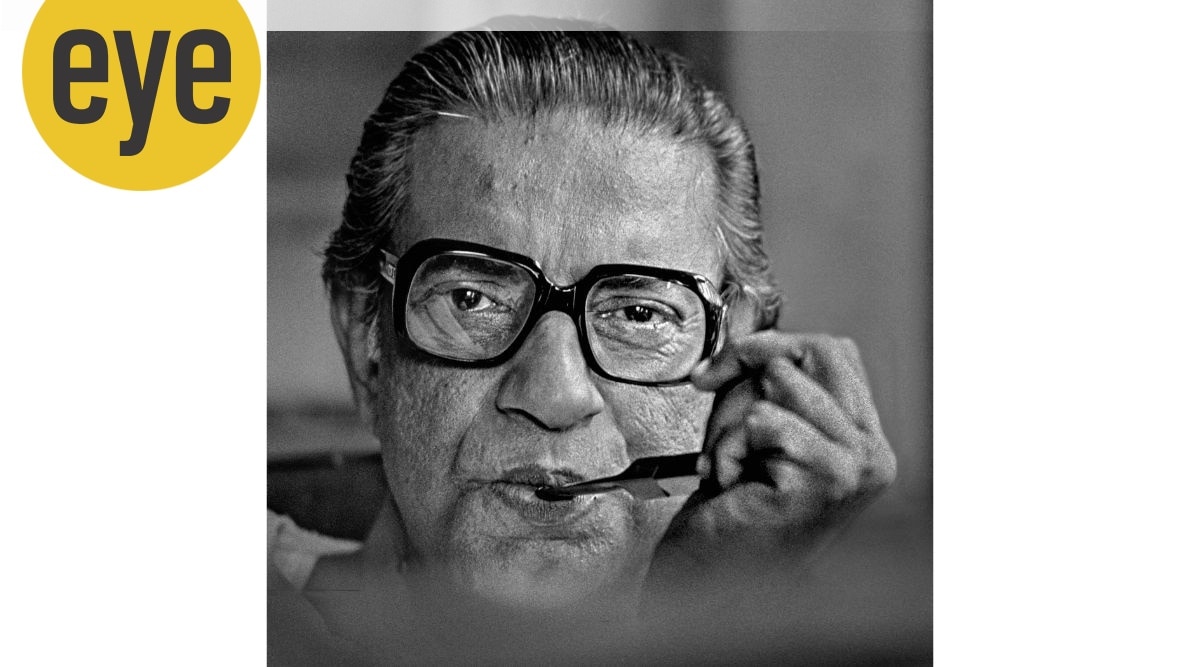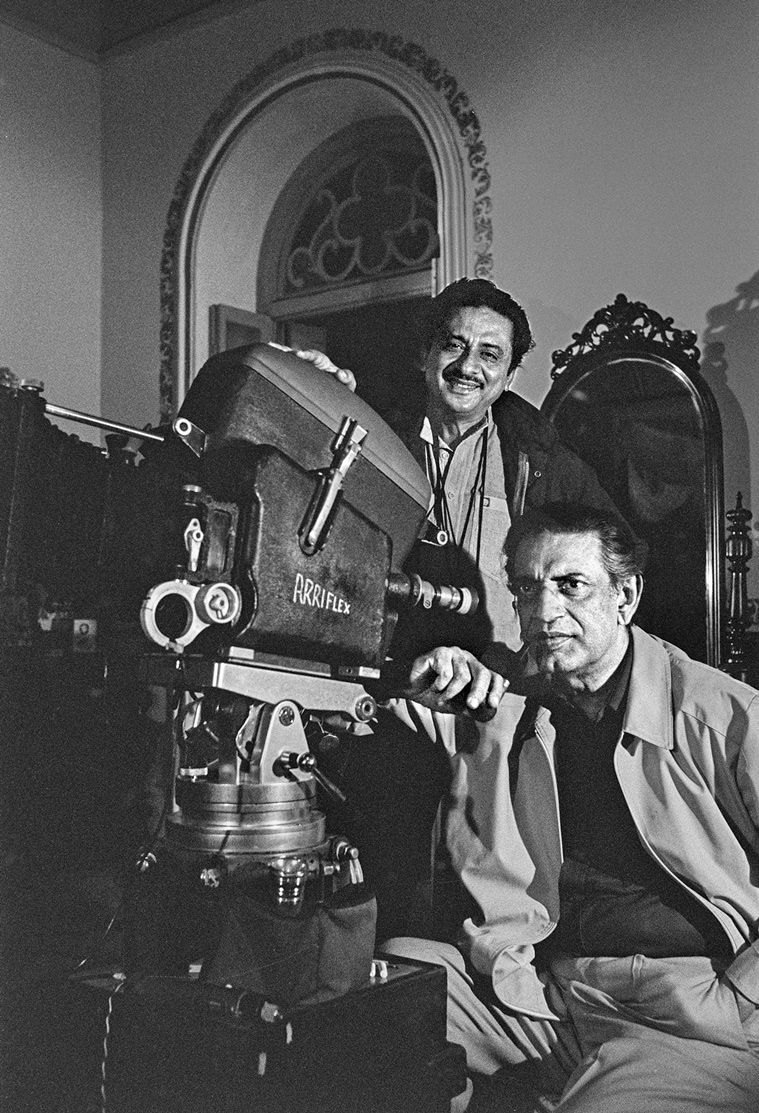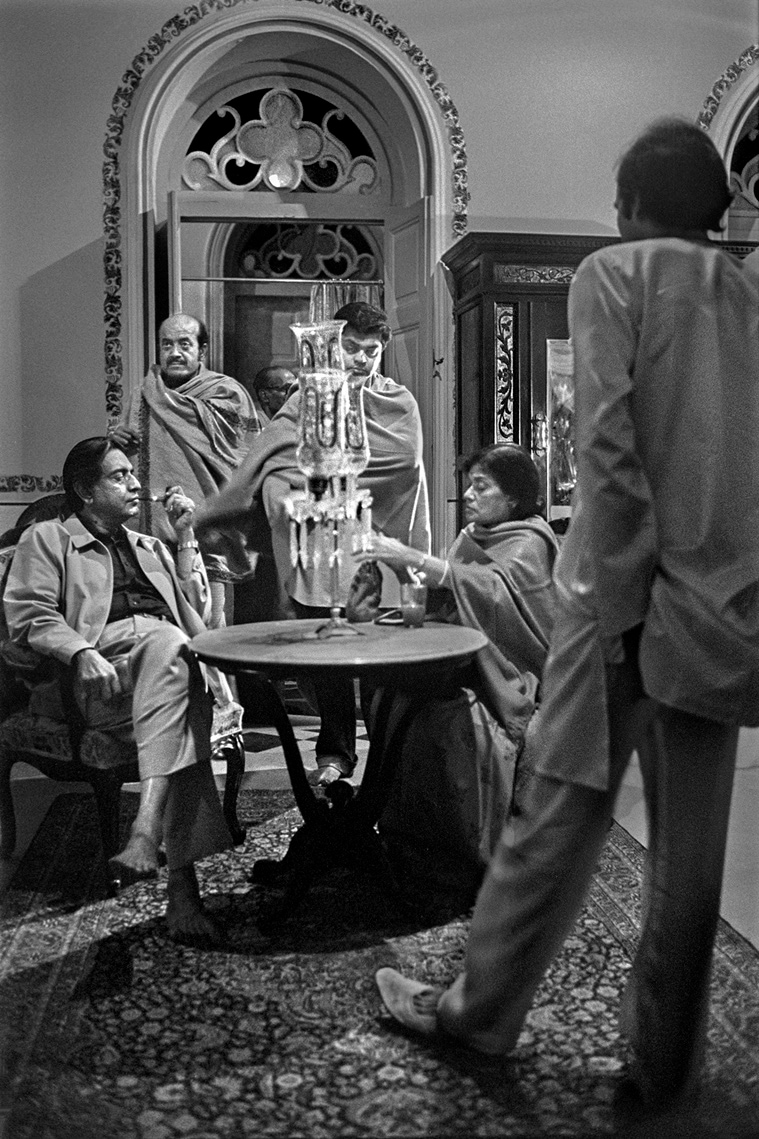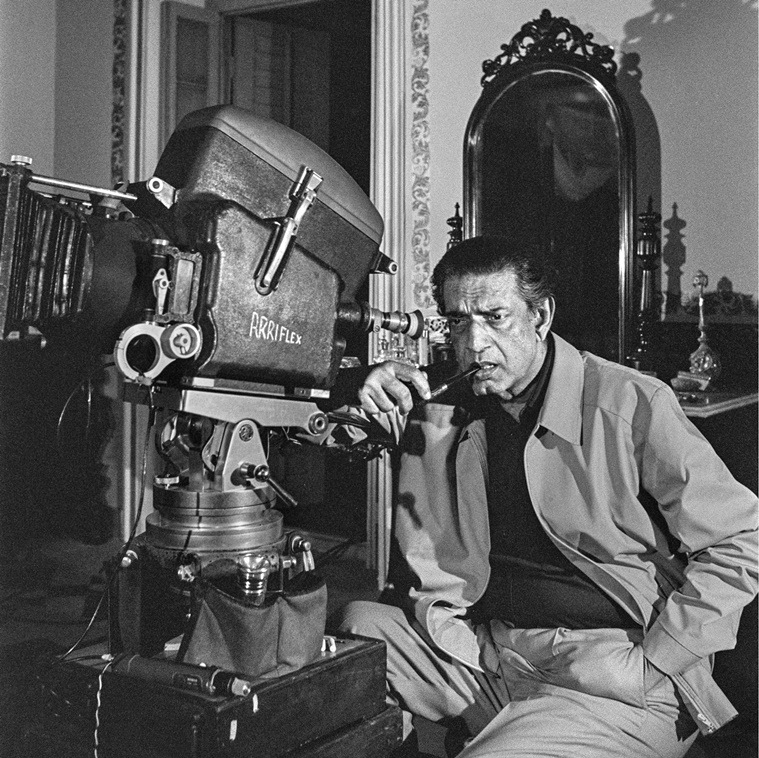 The filmmaker in an image from Raghu Rai's photo book Being with Dadu: Satyajit Ray. (Credit: Raghu Rai)
The filmmaker in an image from Raghu Rai's photo book Being with Dadu: Satyajit Ray. (Credit: Raghu Rai) Raghu Rai recalls first seeing a photograph by Satyajit Ray in 1965-66 when his brother S Paul brought home Edward Steichen’s iconic book The Family of Man. “It was like the bible of documentary photography where almost all the important photographers of the world were there. The only Indian represented was Satyajit Ray, with a beautiful photograph of Pather Panchali (1955), and that is when I began following his work,” says Rai, 79. The interest generated led him to explore Ray’s cinema further. “Every time I watched his films, I became convinced that the last one was better than the previous one,” he writes in his recently released book Being with Dadu: Satyajit Ray (Raghu Rai Foundation, Rs 2,000). In it he shares photographs of the filmmaker taken by him in 1980 over two days in Calcutta (now Kolkata).
Familiar with Ray’s work, Rai first met him in 1974 at the National Film Awards in Delhi. A young photographer then, he remembers offering help to Ray as he stepped down from the stage with the three awards he’d won that night. They were formally introduced only in the late ’70s, when they co-judged a competition in Calcutta, where the movie maverick complimented the photographer for his skills. It was almost a decade later, in 1980, when Rai proposed to his magazine editor a cover story on Ray. “One of my editorial friends said everybody knew about him and there was nothing that I could reveal. I pointed out it wasn’t that simple. The mystery of every individual comes across only once in a while when you make yourself available mentally, physically, spiritually. It is important to understand the person, connect with them,” says Rai.
 The filmmaker in an image from Raghu Rai’s photo book Being with Dadu: Satyajit Ray. (Credit: Raghu Rai)
The filmmaker in an image from Raghu Rai’s photo book Being with Dadu: Satyajit Ray. (Credit: Raghu Rai) In Calcutta, he was greeted by Ray on the sets of Ghare Baire (1984), where he photographed the director as he instructed his cast (Soumitra Chatterjee, Victor Banerjee, Swatilekha Sengupta, Jennifer Kendal, among others) and crew, as well as at his then home in Bishop Lefroy Road in south Calcutta. “I was allowed to take my own shots provided I was careful and stayed put when the filmmaker called for action and cameras started rolling,” states Rai in the book. Back in Delhi, upon processing the films manually without temperature control, he realised that all were underexposed. The “heartbroken” photographer could only publish a few images and carefully kept the negatives, only to scan them years later, during the COVID-19 pandemic, with digital technology that allowed balancing of tonal values, or the lightness/darkness of shades between black and white. “Thirty-five years later, I realised that my fears had been unfounded. I had managed to capture Dadu in different situations, moods and expressions; I had, somehow, shot some of my best photographs of Satyajit Ray, the film director, scriptwriter, music composer, illustrator, humanist, and so much more,” writes Rai. He adds, “He was a grand, grand human being and extremely generous. The two days I spent with him, not even for a moment did he give me the impression that he was busy or important. He asked me what I wanted.”
 The filmmaker in an image from Raghu Rai’s photo book Being with Dadu: Satyajit Ray. (Credit: Raghu Rai)
The filmmaker in an image from Raghu Rai’s photo book Being with Dadu: Satyajit Ray. (Credit: Raghu Rai) In the 95-page book, he shares some of these photographs in the section “On the Sets” — with Ray reading notes, interacting with his actors, smoking his pipe, and looking amused in a candid shot. If the section “face to face with Dadu” focuses on his numerous expressions, in “the journey”, Rai steps out with Ray on the streets of Calcutta, photographing him against the backdrop of river Hooghly, looking at the immersion of the Durga idols and sharing a laugh with children on the banks. “I should consider myself fortunate that I got the great Ray away from his familiar environment, and was able to shoot these special moments when he was relaxed and in a very different frame of mind,” writes Rai. The book, he adds, is an intimate tribute to the filmmaker whom Rai addresses as Dadu, or a grandfatherly gent, in Bengali. “We used to affectionately call him Manik-da because elder brother is called dada but when I was working on the book, I thought somebody so creative and magnificent can’t just be dada (elder brother). He has to be dadu,” says Rai.
 The filmmaker in an image from Raghu Rai’s photo book Being with Dadu: Satyajit Ray. (Credit: Raghu Rai)
The filmmaker in an image from Raghu Rai’s photo book Being with Dadu: Satyajit Ray. (Credit: Raghu Rai) - The Indian Express website has been rated GREEN for its credibility and trustworthiness by Newsguard, a global service that rates news sources for their journalistic standards.

